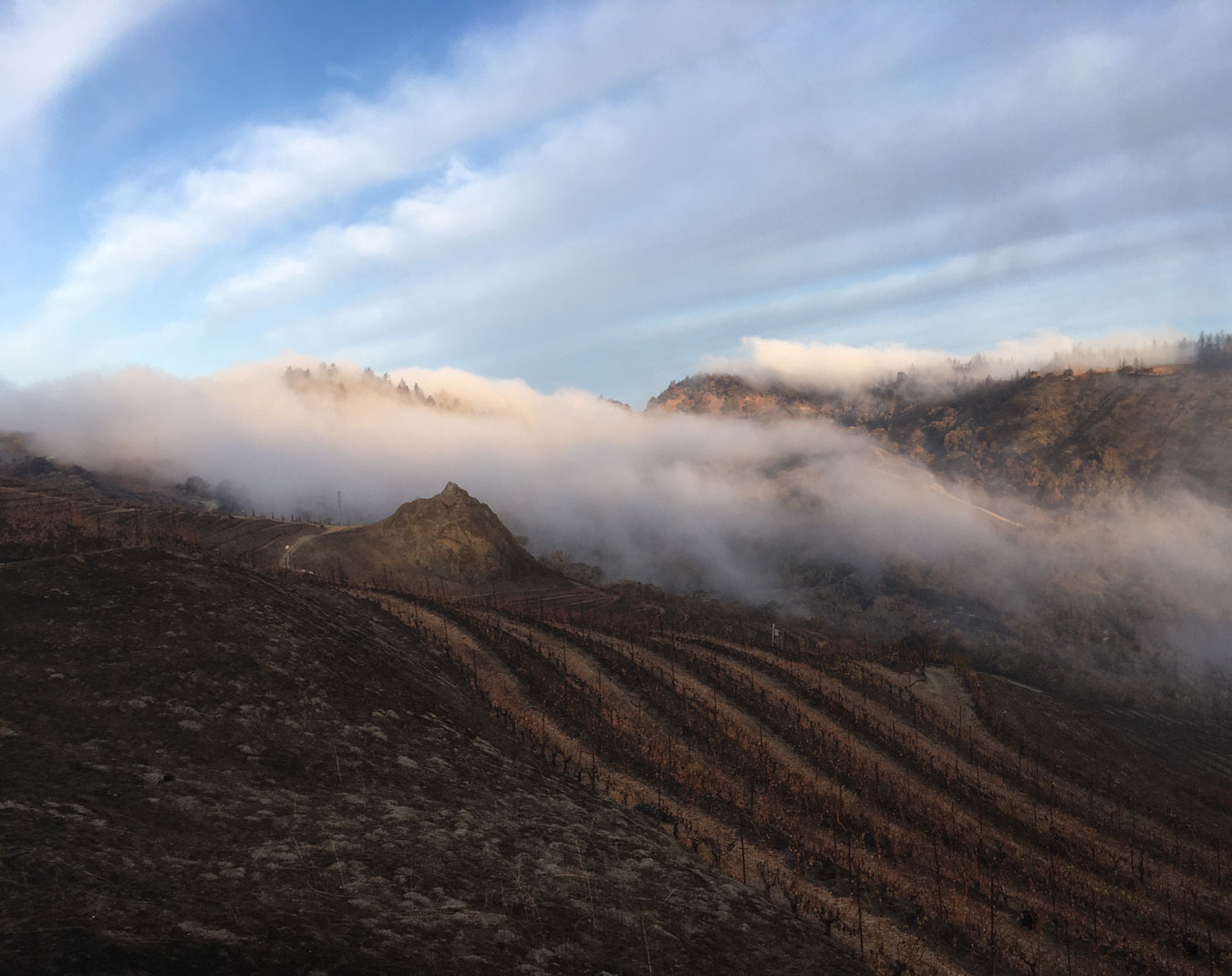
“It’s like having picture books of your childhood: The wine represents a historical record. All of these vintages are still with us, not lost.”
—Chris Howell
“Wineries burn, but places endure: After Cain is destroyed, new reasons for hope,” San Francisco Chronicle, October 2020:
A comforting perspective on the wine industry’s horrific losses during the Glass Fire, in this week’s Drinking with Esther newsletter
How can I begin to characterize what’s happened in Wine Country this week? The familiar set of words — devastating, catastrophic, heartbreaking — feels inadequate.
Each day, we’re learning more about what precisely the Glass Fire, which has burned more than 48,000 acres since igniting in eastern Napa County early Sunday morning, has destroyed. So far, at least 16 wineries have lost structures, with significant damage registered at several others, at the northern end of Napa Valley around the cities of Calistoga and St. Helena.
On Wednesday morning, a new gut punch came: Cain, an estate at the top of Spring Mountain, had lost virtually all of its buildings, winemaker Chris Howell told me. The main winery, plus a barn built in the 1970s, were gone.
I love wines from many of the wineries that experienced losses this week, but with Cain I have a special connection. I first encountered the label during my first wine-related job, stocking shelves at a wine shop in Boston. The business favored Europe over California, but when I asked the owner to recommend some California bottles for me to try, he mentioned Cain. Before I left the job, I capitalized on my employee discount to buy a mixed case that included Cain Five, the winery’s Bordeaux-style blend from its Spring Mountain estate vineyard.
The Cain Five was like no California wine I’d ever tasted. It was an earthy, savory antidote to the polished, fruity archetype I was expecting. I smelled flower petals and moss, tasted mushrooms and sweet green herbs.
Years later, when I moved to California to work for The Chronicle, Cain was one of the first wineries I visited in my new role — the last stop on my first real day of Napa Valley reporting. I remember being embarrassingly late; I’d done a poor job of accounting for the driving time between the various wineries on my agenda that day.
Howell was so gracious, and I’ll never forget sitting at a table with him in the winery long after 5 p.m. as the rest of the staff went home, patiently guiding me through five or six vintages. I felt a little star-struck, to be honest, given how much I already loved the wines. My gas tank was practically empty — I was running so late that I hadn’t stopped to fill it — and Howell reassured me that I’d make it to the gas station in St. Helena just fine since the drive out of the Cain estate, down Spring Mountain, was so steeply downhill. (He was right. My foot was on the brake the whole time.)
The following year, when my parents came to visit and demanded that I take them on a tour of Napa Valley, Cain was the first place I brought them. They got to see the magic of it themselves as Howell drove us through the hilly maze of vineyards and snapped fragrant leaves off of bay laurel trees for us to smell — an aroma that unmistakably manifests in Cain’s wines. Since then, Howell has been one of my most reliably thoughtful sources for the wine industry on topics ranging from the spoilage yeast brettanomyces to climate change.
As the Glass Fire ripped across Napa Valley, and as we learned it had reached Spring Mountain, I feared for Cain and its neighbors. On Tuesday, I tried to drive up there myself, but a police officer at the base of Spring Mountain Road wouldn’t let me pass, even after I waved my press badge. Trees were still falling, he said, it was too dangerous.
When I expressed my dismay to Howell over the phone on Wednesday morning that Cain was gone, he gently corrected me. “The winery may be gone, but Cain remains,” he said.
“It’s shocking and heartbreaking,” he continued, “but the key is that the vines are there.” The vines themselves, seen above in a photo from 2016, may actually be OK. As for the wine, the 2019 and 2020 vintages were lost with the building, but the rest of the inventory is stored offsite. In fact, Cain is only just now releasing its 2016 wines, so there are still multiple intact vintages in the pipeline and plenty of wine for customers to buy.
But when Howell talked about Cain “remaining,” he wasn’t just referring to bottles of wine or even to grapevines. He was referring to the place of Cain, which no fire or natural disaster could ever erase. The singular character of this mountaintop land — its slopes and soils and high-elevation sunlight and all those fragrant (and fire-resistant) bay laurel leaves — endures, and will never lose its ability to convey its particularities through a wine.
That struck me as comforting, even hopeful.
“It’s like having picture books of your childhood: The wine represents a historical record,” Howell said. But the memories don’t die with the book. “All of these vintages are still with us, not lost.”
By Esther Mobley

